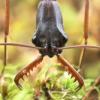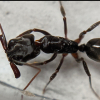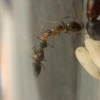Wow, you should record the species in Florida so they can show up on antmaps. Also Otter, he is in Florida, and Acromyrmex aren't that far east so its probably not that. I wish I had your luck finding cool queens. All I've found this year are 2 Camponotus queens, tetra, molesta (which subsequently died), and vividula.
Man I wish I could have tetramorium but all I have here is RIFA and N. fulva which are now wiping them out. They're gonna be the next big invasive since they're immune to RIFA venom.





















